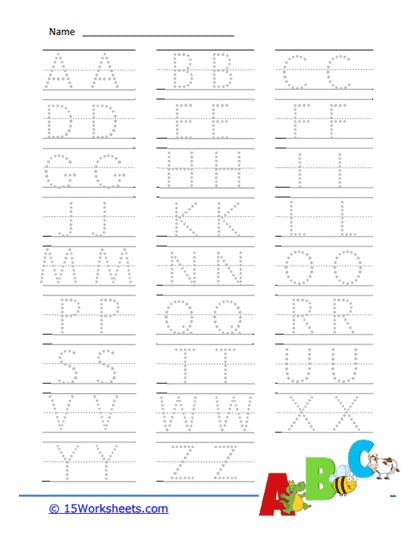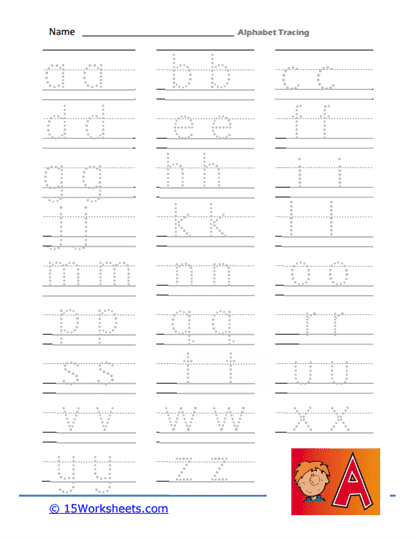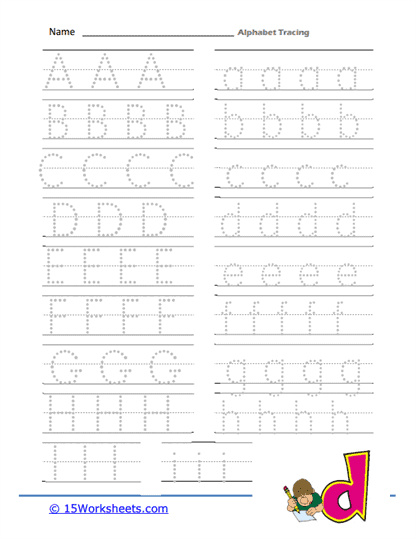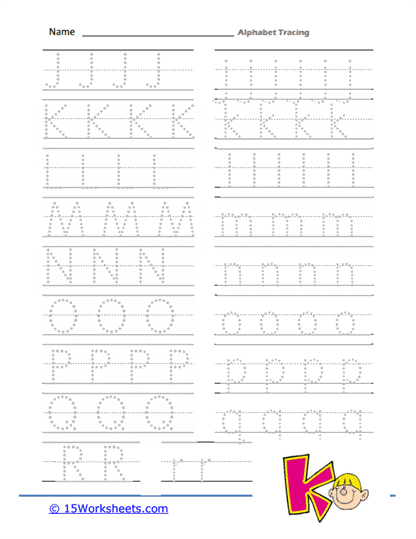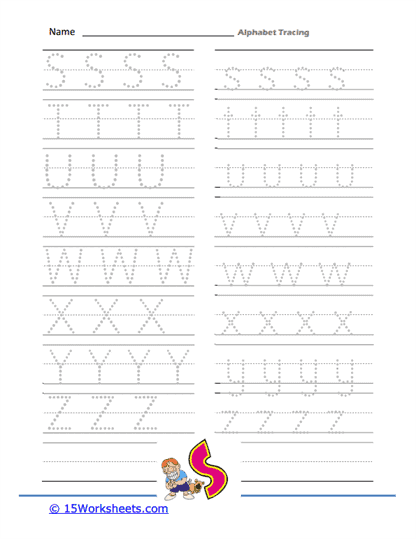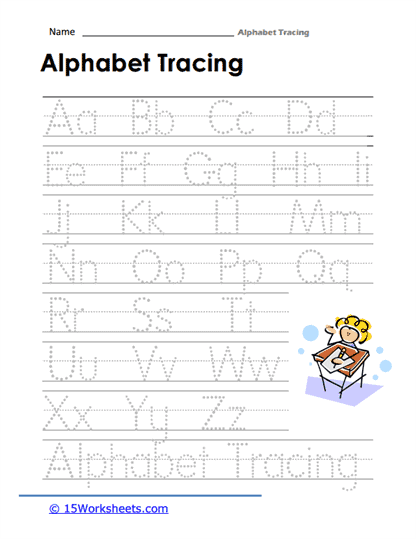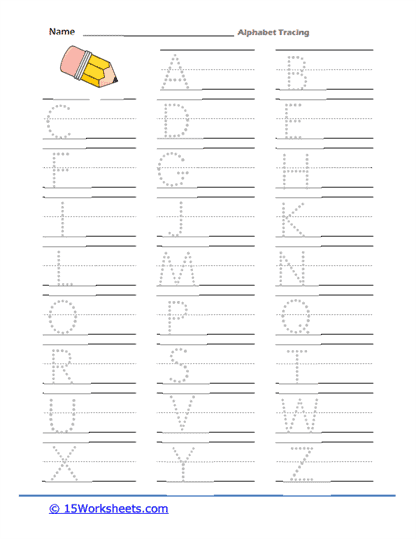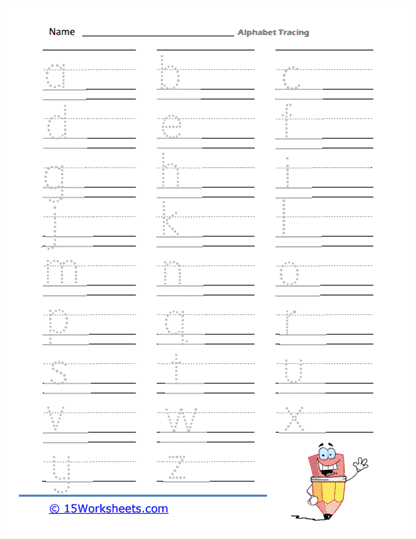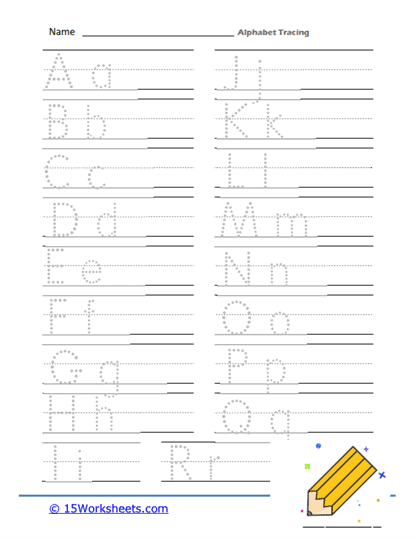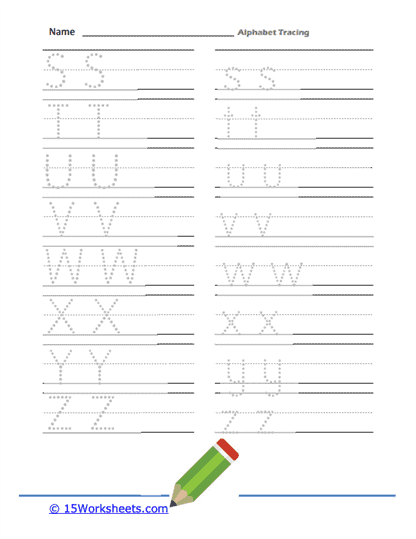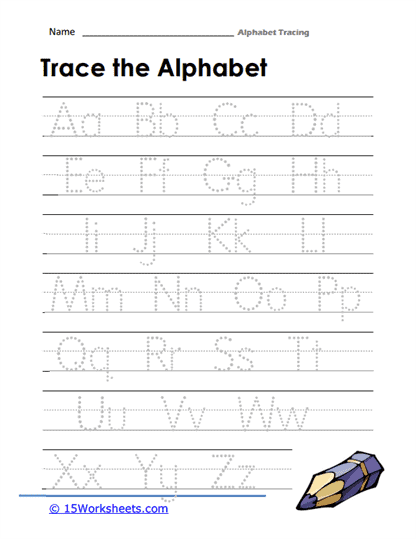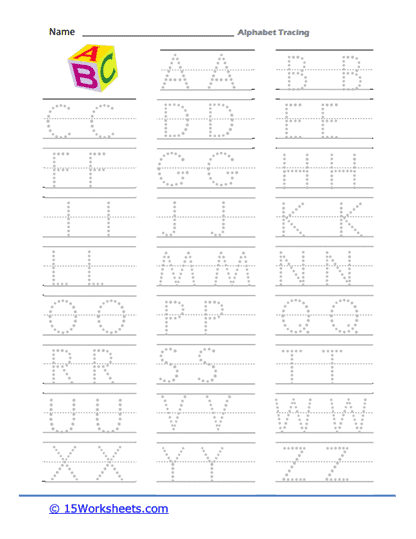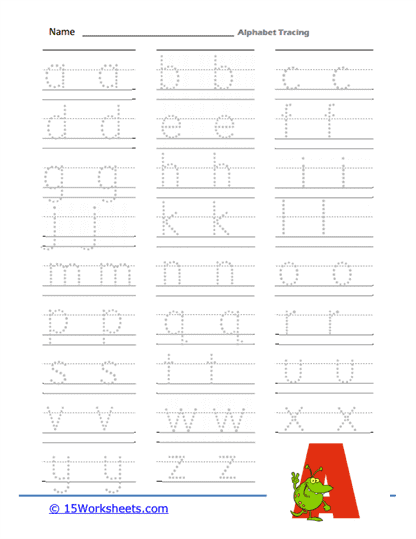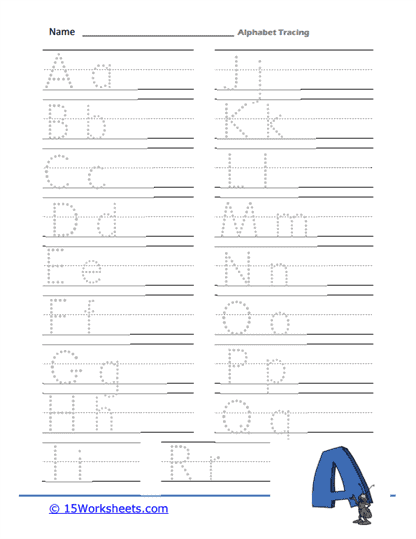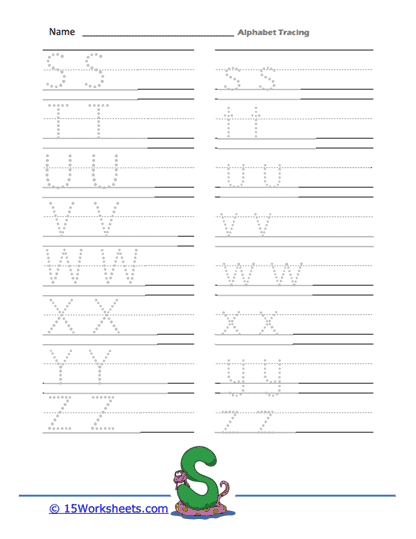Alphabet Tracing Worksheets
What Are Alphabet Tracing Worksheets?
Alphabet tracing worksheets are educational activities designed to help children learn and practice the alphabet, including letter recognition, letter formation, and fine motor skills. These worksheets typically feature individual letters of the alphabet with dotted lines that children can trace to practice letter formation. Alphabet tracing worksheets are a useful tool for teaching the alphabet to young children or those learning English as a second language.
How to Learn the Alphabet by Tracing
Tracing alphabets is the first step in teaching preschoolers how to write. It teaches kids how to hold a pen and improves their letter recognition abilities. You should do a few things when starting preschoolers on tracing alphabet exercises, such as helping them learn the sound of the alphabet.
Tracing alphabets teaches children how to hold pencils and use their hand and finger muscles to form particular alphabets. Therefore, after practicing tracing alphabets, it will become much easier for children to draw the alphabets on their own without the help of the dotted lines.
So, if you are a parent or teacher trying to teach children how to write the alphabet, starting them on tracing books is a great way to accomplish this.
How to Teach a Child to Trace for the First Time
The best way to build the foundation for tracing is to give your toddler pencils, crayons, and a piece of paper. Let them draw whatever they want. By scribbling on paper, your toddler’s fingers will get trained to hold a pen and get familiar with the hand movements required to trace. Here are a few steps you can follow to teach your toddler how to trace for the first time. (Purchase a tracing book or print out a few traceable letters for this exercise)
- The best way to teach a child how to trace is to go through each alphabet in the chronological order
- To begin, you can show your child an object that starts with an ‘A,’ e.g., you choose an apple
- Ask the child what is this
- After they answer, tell them that this is an Apple, stress upon the ‘A’ and repeat ‘A’ for an apple
- Next, you can tell them today we will learn how to write an ‘A’
- Now you can take a piece of paper and write down an A on it to show the child how an A looks
- Next, grab the tracing book or printed traceable alphabets and ask them to trace the dots to form the alphabet
- If the child has trouble understanding how to trace, you can also tell them to hold a pencil and, with your hand, guide them through the dotted line
We recommend not rushing it and introducing children to new letters quickly. Take your time and let the child practice how to write one alphabet. When you are sure they know how to write the alphabet A, you can move on to B.
You can also make tracing alphabets fun for children by making traceable images of objects starting with the letters and asking kids to trace and color them too. Doing so will help you add a fun element to the exercise, as all kids love coloring. Moreover, it will also help you enhance students’ creativity and improve their drawing skills.
You can also conduct online tracing activities through websites like Zoolingo, where you will find numerous tracing activities. Some tracing activities Zoolingo feature phonic songs that will keep your child entertained.
For example, after tracing the alphabet ‘A,’ the website plays phonic songs featuring an apple. This not only helps children learn how to write the alphabet but also helps them remember their sounds.

